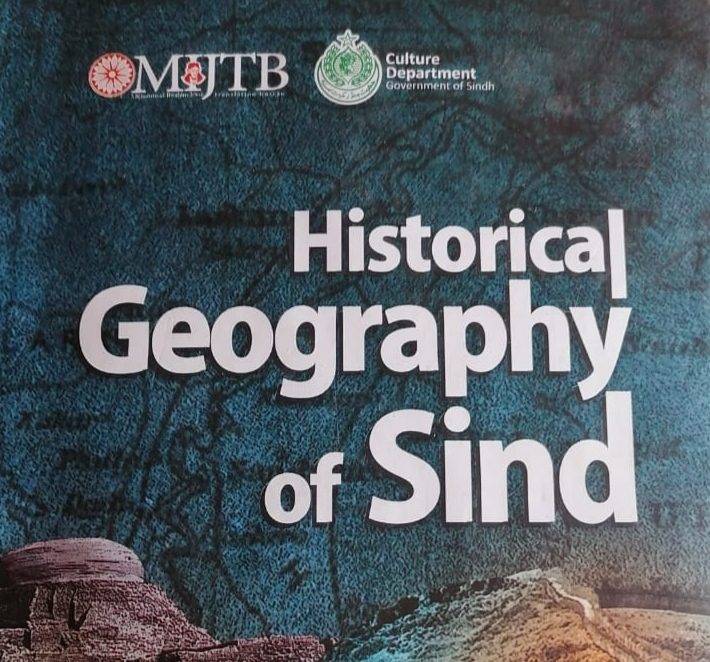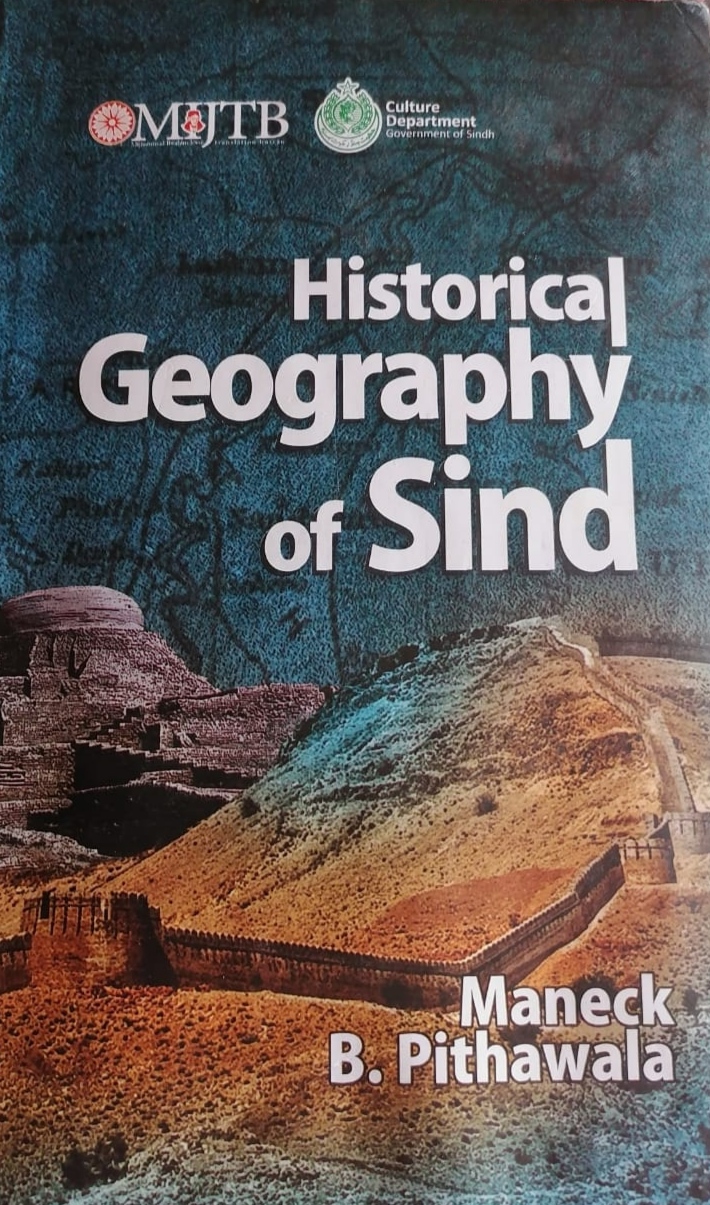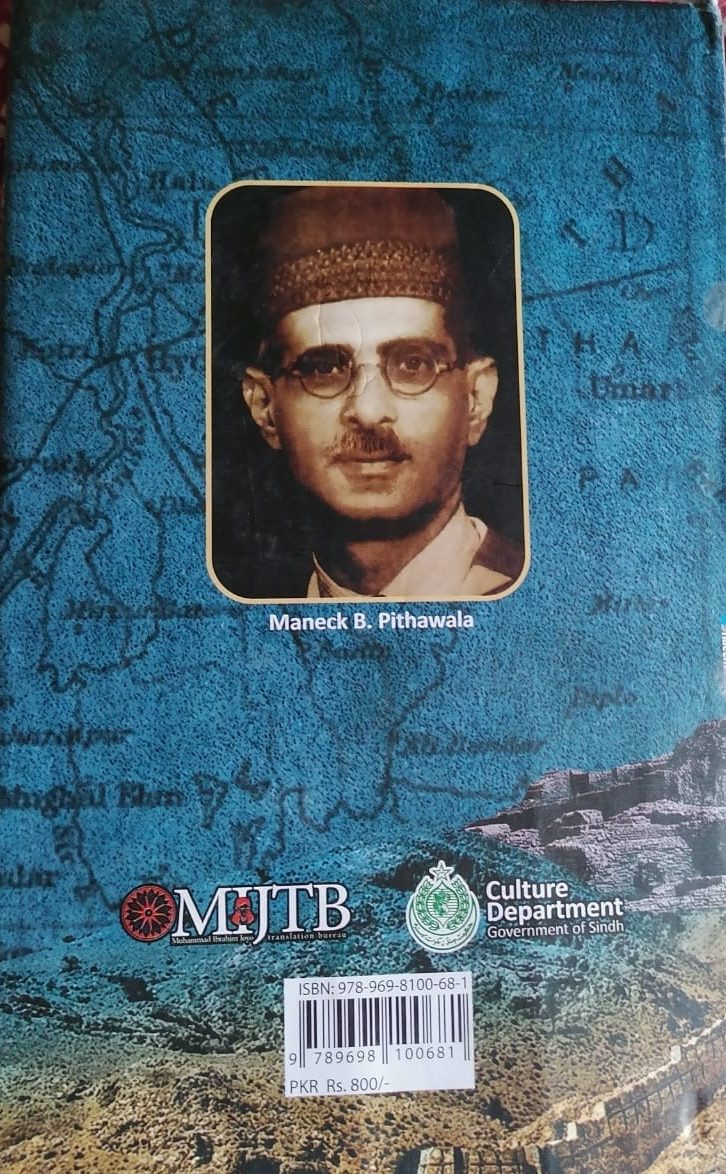
It is need of the hour to continue the research on geography where this giant of geography has left his work. The academia and scholars of Sindh lag behind in this regard and the subject of geography seems neglected discipline.
By Noor Ahmed Janjhi
Geography plays the important role in creating the overall temperament of any society. Sindh had been a versatile valley with many layers of topography and reflections of geography. The area of the Indus Valley Civilization was very vast containing many sub areas. There had been many settlements and urban centers. Sindh of present time has also the land of geographical diversity and geological potential. Political maneuvering and strategic mobilization follow geographical consideration. Any state realizes its existence by a geographical context. Nothing happens in vacuum. From Ptolemy to Arab geographers and from English geographers and archaeologist to M. B. Pithawala, there seems great work in the field of geography of Sindh. The study of the geography facilitates any interaction between the nations and the people or among the people of any area.
 M. B. Pithawala has left wonderful research in the field of geography. Recently his book ‘Historical Geography of Sindh’ has been reprinted by the Culture Department Government of Sindh. Before discussing the book, let us have a look on the life account of the author.
M. B. Pithawala has left wonderful research in the field of geography. Recently his book ‘Historical Geography of Sindh’ has been reprinted by the Culture Department Government of Sindh. Before discussing the book, let us have a look on the life account of the author.
Professor Dr. Manekji Bejanji Pithawalla, a great geologist, geographer and a scholar, belonging to Parsi community, was born on 20th November 1886, in village Nawsari, Pune India. After getting early education from his native village, he graduated from Wilson College Bombay and completed his science education from Bombay University. He came to Karachi from Pune in 1919. In 1920, he was appointed as the principal at Bai Verji Sopariwala (BVS) High School located in the heart of Karachi by the authorities of the school. In 1932, he went to London and completed his Ph.D. from B College London University under the supervision of Prof E G Tylor with the topic of “A Geographical Analysis of the Lower Indus Basin (Sindh) – Climatic Conditions in Sindh”. He came back and continued his service at the school till 1946. He was also the president of the Geographical Society of Sindh and had edited the Research Journal of the Society. After partition, he remained on different positions as Professor of Geography and Geology at NED College and Islamia College, Chairman of Geography and Geology Karachi University, Professor and Dean of Science Faculty, University of Sindh and Advisor on Economic Affairs, Government of Pakistan. Besides, he worked with many associations working for social service. He lived in Karachi till 1965 and then moved to Bombay, where he took his last breath on 16th June 1969.
Having dedicated his whole life to research and study, he wrote 50 books and many papers on geography covering many aspects of the subcontinent. His love for Sindh reflects from his research endeavors.
The book under review is divided into six parts. First part is on preliminary survey elaborating the relation of history with geography, outstanding geographical features, Sindh as a gift of the Indus and a land of contrasts. Second part discusses pre-historic and early historic period under the topics of pre-historic period, Indus Culture People, A Dark Age, Persian Conquest, The Greeks and post- Alexandrian period. Part three discusses pre-Arab period and the Arab period. Part four elaborates post-Arab conditions, The Sama Dynasty, The Sumra, Samma, The Arghun, Tarkhan, Mughal, Kalhora and Talpur Dynasties. He describes Sindh as the geographical necessity for the British. Part five discusses antiquity of Sindh under topics of pre-historic ruins, ruins of Mihran system, ruins of Hakra-Wahinda system and Deltaic ports. Part six is about Lower Indus Basin. Summary has been given with the conclusion by portraying the geographical synthesis of Sindh, and physical factor.
The above mentioned topics are just a sample and the ocean of information lies beyond it in the book. The author not only gives data on the subject but also analyses it beautifully. Explaining the relation between history and geography, the author mentions the influence of the natural geographical factors on human character and actions and the history of any country related with the geography of the country. He writes, “World power at any time in the history of mankind can be resorted into (1) the place, which must mean the geographical factor, (2) the time, which must be ripe and opportune, and (3) the man, who must be ready to utilize the opportunities.
 The diversity of historical factors molds the temperament of people. Heterogeneous and homogeneous people behave differently as a nation. The subcontinent is a mixture of races, different castes and creeds, speaking different languages, observing different cultures. Because of these factors, there is lethargy in the unity and react after passing through difficult conditions. Defining the Indus Basin, the author calls it as a mixture of two trends. He opines, “To the Persian and Vedic Aryans from the North it owes it language and other institutions, while to the Sumerian and Semitic peoples from across the Sea, it owes its civilization and mode of life.” The point of view cannot be seen eye to eye because the Aryan Invasion Theory has been rejected now and the Semitic and Sumerian cultures owe greatly to Sindhian input because of the exodus of people of Mohen Jo Daro. The writer has mentioned it because of the currency of the research about the theory of Aryans and non-Aryans. A language cannot be developed in a few years. The language written on Indus Seals is the language of the Indus rather than a language of any invader. This absorbing land, which had been absorbing many influences and oppression, has maintained her identity in terms of language and cultural manifestations.
The diversity of historical factors molds the temperament of people. Heterogeneous and homogeneous people behave differently as a nation. The subcontinent is a mixture of races, different castes and creeds, speaking different languages, observing different cultures. Because of these factors, there is lethargy in the unity and react after passing through difficult conditions. Defining the Indus Basin, the author calls it as a mixture of two trends. He opines, “To the Persian and Vedic Aryans from the North it owes it language and other institutions, while to the Sumerian and Semitic peoples from across the Sea, it owes its civilization and mode of life.” The point of view cannot be seen eye to eye because the Aryan Invasion Theory has been rejected now and the Semitic and Sumerian cultures owe greatly to Sindhian input because of the exodus of people of Mohen Jo Daro. The writer has mentioned it because of the currency of the research about the theory of Aryans and non-Aryans. A language cannot be developed in a few years. The language written on Indus Seals is the language of the Indus rather than a language of any invader. This absorbing land, which had been absorbing many influences and oppression, has maintained her identity in terms of language and cultural manifestations.
After discussing the outstanding geographical features and position of topography, the author has given the historical setting of Sindh along with a wonderful map showing the influx of 17 human races in Sindh. The setting describes interesting order with befitting chronology.
Having explained pre-historic and early historic period, the author presents a good deal of data. Revising the term ‘aborigines ‘, the author clears that the Indian Archaeology is yet in its infancy and replaces the term aborigines with ‘early settlers’. A map is given on page 29 of the book to highlight the contact of foreign lands with Mohen Jo Daro (2700 BC-2500 BC). The interaction made this area an area of diversity of people. The chapter covers different topics at length such as geographical environment, climatic conditions, human geography, age of Mohen jo Daro, people of commerce, Chanhu jo Daro excavations, conflict of Upper and Lower Indus Valley cultures, knowledge of the Aryans about the Sindhu, Pani people, migration of the races and the Indus Valley, functioning of the Indus Valley, Jat and Med, Alluvial Gold, Conquest of Sindh by Darius, Voyage of Nearchus, Alexander’s Commercial Plan and return journey, and concludes the chapter on the geographical value of Sindh. He writes, “The open character of the valley allowed free movements, though, on account of some scattered desert tracts amidst fertile fields, they were restricted here and there”.
In this way, the part three and four discus the historic period starting from first century AD to the British annexation of Sindh. Both the chapters present the historical and administrative aspects of geography. Part five gives details about the old sites. The author categorizes them under four heads, (1).Prehistoric ruins (2). Belonging to Mihran System, (3) Belonging to Hakra-Wahinda System and (4) Deltaic Ports.
The sites include; Mohen Jo Daro, Chanhu jo Daro, Naru jo Dhoro, Aror, Bahmanabad, Mansura, Thatta, Patala, Nasarpur, Old Hala, Nirunkot, Khudabad, Kalari, Bukkur, Sehwan, Jerruck, Vijnot, Muhammad Tur, Umerkot and Wango. Deltaic ports include Bhambhra, Debal, Lari Bundar, Minna Nagar, Krokla, Shah Bundar, Ghora Bari, Keti Bundar.
Part six draws attention of the geographical synthesis of Sindh. It discusses changing aspects of Sindh. After the analysis, the summary of research on hydrological changes in the Pujab and Sindh has been given.
By and large, the book offers very interesting and worthwhile material as well as analysis of the data and concludes smartly. It is need of the hour to continue the research on geography where this giant of geography has left his work. The academia and scholars of Sindh lag behind in this regard and the subject of geography seemed neglected discipline here.
[author title=”Noor Ahmed Janjhi” image=”https://sindhcourier.com/wp-content/uploads/2021/05/Noor-Ahmed-Janjhi-Sindh-Courier.jpg”]Noor Ahmed Janjhi is a senior educationist based in Desert District Tharparkar Sindh. He is author of several books in Sindhi and English on folk literature including two poetry books.[/author]